 Hartlepool Sports & Leisure
Hartlepool Sports & Leisure
- Cinemas, Theatres & Dance Halls
- Musicians & Bands
- At the Seaside
- Parks & Gardens
- Caravans & Camping
- Sport
 Hartlepool Transport
Hartlepool Transport
- Airfields & Aircraft
- Railways
- Buses & Commercial Vehicles
- Cars & Motorbikes
- The Ferry
- Horse drawn vehicles
 A Potted History Of Hartlepool
A Potted History Of Hartlepool
- Unidentified images
- Sources of information
- Archaeology & Ancient History
- Local Government
- Printed Notices & Papers
- Aerial Photographs
- Events, Visitors & VIPs
 Hartlepool Trade & Industry
Hartlepool Trade & Industry
- Trade Fairs
- Local businesses
- Iron & Steel
- Shops & Shopping
- Fishing industry
- Farming & Rural Landscape
- Pubs, Clubs & Hotels
 Hartlepool Health & Education
Hartlepool Health & Education
- Schools & Colleges
- Hospitals & Workhouses
- Public Health & Utilities
- Ambulance Service
- Police Services
- Fire Services
 Hartlepool People
Hartlepool People
 Hartlepool Places
Hartlepool Places
 Hartlepool at War
Hartlepool at War
 Hartlepool Ships & Shipping
Hartlepool Ships & Shipping

Seaton Carew Shipwrecks
Details about Seaton Carew Shipwrecks
Images and documents relating to shipwrecks that have occurred at Seaton Carew.
Location
Related items :
 Adrift in a sandstorm
Adrift in a sandstorm
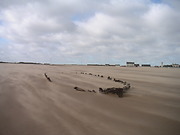 Created by G. Green
Donated by Tees Archaeology
Created by G. Green
Donated by Tees ArchaeologyDated 2004
This image of the Seaton Carew Designated Historic Wreck was taken in March 2004 in the middle of a fierce sandstorm.
More detail » Ashore
Ashore
 Created by D. Marlborough
Donated by D. Marlborough
Created by D. Marlborough
Donated by D. MarlboroughDated 2002
This excellent image, looking towards Seaton Carew, shows the stern of the Designated Historic Wreck, with the 1930s Clock Tower in the distance to the right.
More detail » Brigantine William Crowe
Brigantine William Crowe
 Donated by Hartlepool Museum Service
Donated by Hartlepool Museum ServiceBrigantine "William Crowe", wrecked on Stranton Beach, beween Seaton and Hartlepool, 3rd August 1900.
More detail » Chance - Figurehead
Chance - Figurehead
 Donated by Whitstable Museum
Donated by Whitstable MuseumDated 2015
Buiilt 1843 wrecked 1857 on Longscar Rocks. The figurehead was returned to its Kent owners and is now in the Whitstable Museum.
More detail » Chance - a general history
Chance - a general history
Built Sunderland 1843 wood snow/brig 134nt. Official No. 5056.
Owners: 1843 Coward, Hartlepool: 1844 D French, Rochester: 1845 GW & H Foreman, E Kemp & Goldfinch, Whitstable.
Masters: 1843-44 Brown: 1844-45 W Alderson: 1845-57 R Foreman.
Bound from Whitstable for Hartlepool in ballast during a hailstorm & force 10 E by N winds on 4 January 1857 the crew of Chance saw Hartlepool & began running for port to take shelter. A heavy sea struck her washing everything movable overboard including her small boat & driving her onto Longscar Rocks. The swinging tiller knocked the master senseless & also injured the mate's arm. The mate managed to make the master fast so he would not be washed overboard & he & the rest of the crew took to the rigging. With the sea breaking over the masthead she drifted for several hours before being driven ashore broadside. The Seaton Carew lifeboat (probably the Tees just before her service was discontinued) rescued the crew from their extremely perilous position & they were taken to Carr House Farm where they were looked after by the farm owner & his wife until they were forwarded home by the Shipwrecked Mariners' Society.
The wreck was sold a few days later. The female bust figurehead was returned to Whitstable where she was erected on the gable of the Whitstable Oyster Company building. When the building was bombed in WW2 the figurehead survived & is now on display in the Whitstable Museum
She looks a bit bedraggled & has no paint but she has survived well over 150 years, being wrecked & bombed so is an extremely lucky lady.
More detail » Crew and wreckage of the Presto
Crew and wreckage of the Presto
 Donated by Maureen Anderson
Donated by Maureen AndersonDated 1912
The image depicts a Seaton Carew official, a policeman, the seven surviving crew and the cargo of pit-props from the Swedish schooner Presto which was wrecked on 1st October 1912 after striking rocks at the slag wall. The master, Johan August Svenson, fell overboard and was drowned.
More detail » Is the Wreck on Seaton Carew Beach the Brig Granite?
Is the Wreck on Seaton Carew Beach the Brig Granite?
Seaton Carew Wreck by Maureen Anderson
In 1996 the wreck of a wooden ship was exposed on the northern part of Seaton Carew beach allowing archaeologists to carry out a fairly detailed survey. It appeared again between 2002 & 2004 allowing further investigation. In 2005 it was partially exposed for most of the time & was not seen at all in 2006 & 2007. From about April 2013 it has been visible throughout the year, possibly because of work being carried out on new sea defenses & promenade which is changing the geography of the beach. The wreck is intertidal so is at the mercy of the waves which means that exposure can vary almost daily. The strong wind often experienced on this part of the coast also has an effect as sand fills & empties from the area in & around the vessel. Sadly, because it is so exposed it has become vulnerable to the elements & the only means of preservation would for it to become buried under the sand again.
Although it was stated by locals that 1996 was the first time the wreck had been seen in over 50 years an earlier photo seems to belie this. Taken by John Yeadon from the North Gare breakwater in the summer of 1983 the photo captures the remains of the Doris. Wrecked in 1930 she was stripped on the beach & her remains are embedded in the sand further north & a little higher up the beach than the Seaton wreck, also intertidal. The photographer, when taking his image of the Doris, has caught the outline shape of the other wreck further along the beach showing that it must have been very near to the surface of the sand in that year (see image 1 below).
The archaeological investigations recorded by Tees Archaeology on the Seaton wreck found that the surviving hull included 91 starboard & 71 port frames. Although the frames stood to 1.5m above the sand, they had been uniformly cut. The planks, frames & ceiling were in good condition & the keelson had steps for two masts indicating that she was a brig (see image 2 below).
The exposed remains were measured at 25.1m (82 feet 4 inches) long x 7.07m (23 feet 2 inches) broad at the widest point. The vessel had been carvel-built & fastened with treenails. Timbers sampled largely proved to be of oak, although a sprung plank at the bow was elm & there was also a larch ceiling plank. The hull appears to have had wooden sheathing. Four iron ‘eyes’, each apparently a one-piece casting or mounted on an iron plate, were attached, low down, to the inner hull planking. The plate measured 21cm. long & the lug of the eye 12cm. long. There was also evidence of a small number of square-section iron nails having been used to fasten some of the ceiling planks to the frames. There was damage to the port side near the stern which could have been due to a collision, damage by storms or have been done deliberately to salvage her cargo. It was thought that at least seven feet of the hull remains buried beneath the sand. Dendrochronology tests were carried out to try & determine the age of the wood but were unsuccessful.
The Granite 1846-1888
Walter Hood & Co, Aberdeen: completed 9 January 1846; yard no. 187; official no. 693; code letters HDVF.
Specifications at time of build; two masts; carvel built oak, larch & elm wood & part iron brig; 256g; 180nt; 101.3/6 x 21.3/12 x 13.3/6 (feet); (approx. 30m x 6.49m x 4m); standing bowsprit; female figurehead.
Owners: 1846 Aberdeen Commercial Lime Company (Blackie’s Quay) & others, Aberdeen; 1885 Thomas Jefferson, Scarborough Street, West Hartlepool (still registered Aberdeen).
Masters: 1846 Alexander Sinclair; 1847-53 John McPherson; 1853-72 Peter Cadenhead; May 1872 –February 1874 Duncan; April 1874-February 1875 Sutherland; April 1875-April & September 1880 Patrick; January-December 1880 Henderson; January 1881-December 1884 Benzie; 1885-1888 Richard Leng.
Many of her early voyages were from Aberdeen to London & Archangel.
Miscellaneous: 10 September 1853 the body of John MacPherson, master of the Granite, was found about 50 yards from where the vessel was lying at Archangel. It was assumed he must have accidentally fallen into the water when going ashore or returning.
26 September 1886 she was in collision with the steamer Edward Eccles which caused the Granite to lose her jibboom, bowsprit & figurehead.
The Last Voyage of the Granite:
On the morning of Tuesday, 13 November 1888 the wind was blowing strongly from the south-east with a heavy sea. Bound from London for Middlesbrough with a cargo of loam (a high nutrient form of soil mainly used in agriculture) & a crew of eight, the Granite was trying to enter the Tees when she was carried to leeward. The tug Dauntless got hold of her rope just as the Granite grounded six or seven hundred yards from the breakwater but the master of the tug had to slip the rope for fear of damage to his own vessel. The tug Agamemnon of Middlesbrough was on the river when the mate, Phillip Newton, saw the Granite ashore. Her masts were holding but working from side to side with the sea & she was beginning to break up. At that time all the crew were on the rail against the fore-rigging (see image 3 below).
On her first rescue mission the Seaton Carew lifeboat, John Lawson, was pulling through the broken sea so the tug took her in tow. Once the lifeboat was as close as it could get to the Granite grappling irons were thrown but they fell short & slipped down the outside of the brig’s bulwarks. At about 11am the masts fell & at the same time three men jumped overboard as the brig began to break up. Two were washed away to the north but one man was picked up by the tug about half an hour later. This proved to be the master, Richard Leng, & although every effort was made to revive him, it was too late. The lifeboat circled the area looking for any signs of life amongst the wreckage & saw one man but as they approached he was swirled away from them & disappeared. After four hours of searching they had to admit defeat & returned to shore (see image 4 below).
Meanwhile the Middlesbrough lifeboat had also made its way to assist in the rescue but by the time it was manned & towed to the scene it was around noon & too late. The coxswain, John Thirlwell, stated at the later inquiry that they did not know of the events taking place until about 10.30 but if they had known sooner their lifeboat could have perhaps got to the scene in less time than the Seaton lifeboat. At that time it was not the practice to telegraph from Seaton to Middlesbrough in the event of a vessel in distress being sighted.
Henry Hood, coxswain & Robert Robinson, second coxswain of the Seaton lifeboat, in giving their evidence at the inquiry said the boat was pulled by eight horses for about a mile over the sands. She then had to be launched on the north side of the breakwater because there was no road over the slag bank. The sand on the north side was like quicksand which made it extremely difficult to maneuver. If there had been a road it would have taken them well over an hour less to reach the Granite. Also if they could have dropped the lifeboat on the other side of the breakwater where there was smooth water it would have made a substantial difference as they could have reached the Granite with ease & perhaps managed to save the crew. Both the distance & the tide coming in were factors to make it an extremely difficult operation. He suggested that a lifeboat should be stationed at the Fifth Buoy Light inside Seaton Snook or inside the South Gare breakwater (see image 5 below).
Apparently a road across the breakwater was begun about a year previously but the work was discontinued. The Coroner at the inquest stated that at the time of this tragedy great works were being carried out at Teesmouth which perhaps could not be done without temporarily endangering something.
Seaton lifeboat crew: Henry Hood, coxswain; Robert Robinson 2nd coxswain; William & Robert Hood; Thomas Blenkinsop; J Kendall; Fred Kitson; William Proctor; Matthew Franklin; William Harrison & Richard Burton.
The Service Return, completed by Henry Hood, stated that ‘She (the lifeboat) took such sea as they never before experienced.’
To add to the terrible tragedy of that day one of the large crowd of onlookers, 69 year old Mary Anne Strover, collapsed & died on the beach. The doctor that attended her said she had suffered heart disease after having been overcome by the ‘excitement’ (see image 6 below).
16 November 1888 the body of William Harland was found by John Henry Franklin in a hole in the sand in the Inner Deep at the North Gare. Because there was no road it took several men to carry the body across the breakwater & then for a distance of half a mile before it could be placed on a cart & taken to the Seaton Hotel.
2 December 1888 the body of William Pearson Storm was found on the sands in front of the old town of Hartlepool.
7 December 1888 a body was found immediately below the road wall at Middleton. It was several hours before the body was removed as a misunderstanding arose as to which police jurisdiction the spot where it was found came under! Although known to be from the Granite the body was unidentifiable.
12 December 1888 the body of John Richard Steel was found on the south side of the North Gare breakwater near Seaton.
12 December 1888 the body of David Buckley was found floating near Hartlepool pier head by two fishermen. David had entered the Hartlepool Workhouse in May of 1883 along with two of his siblings after having been abandoned half-starved & poorly clothed by their parents near the iron railway arch at Throston. David had been apprenticed to the Granite about five months prior to her being wrecked.
16 December 1888 a body was found floating near the Teesmouth. Although known to be from the Granite this body was also unidentifiable.
23 December 1888 the body of Welburn Atkinson was found on Seaton Sands.
Lives lost November 1888:
Atkinson, Welburn, seaman, Scarborough
Buckley, David, 17, apprentice, born Birkenhead, inmate of Hartlepool Workhouse
Harland, William, 19, able seaman, 92 Scarborough Street, West Hartlepool (buried 18 November 1888 Hartlepool Cemetery)
Leng, Richard, master, 44, born Robin Hood’s Bay, resided 57 Alliance Street, Hartlepool
Palmer, James Dixon, apprentice, Whitby
Perkins, Henry, able seaman, Whitby
Steel, John Richard, mate, 23, born Robin Hood’s Bay (nephew of Richard Leng)
Storm, William Pearson, apprentice, 17, born Robin Hood’s Bay
Comparisons
Both vessels had two masts, were carvel built & consisted of oak, elm & larch woods.
The measurements taken of the Seaton wreck were of the remaining hull so, although a guideline, they are not of the complete vessel which would have certainly been longer & perhaps a little wider when intact. She drove inshore prow first so this part of the vessel is the most deeply buried in the sand. Taking all this into account the width of the two vessels would have been remarkably similar.
Granite when built: 101.3/6 x 21.3/12 feet & inches (approx. 30m x 6.49m) Height was 13.3/6 feet (approx. 4m).
Seaton Wreck: 25.1m (approx. 82 feet) long x 7.07m (approx. 23 feet) broad at the widest point. There was evidence of a few iron nails & a small iron plate in the Seaton wreck & iron, which could refer to nails, is recorded in the building of the Granite. There may have been more iron in the Seaton wreck which is buried under the sand or has long since rusted away.
James Pattison, curate of Holy Trinity Church in Seaton Carew from 1885 to 1890, took up the hobby of photography in late 1887 with most of his photos of Seaton taken between 1888 & 1889 & a few in 1890. Although many of his glass plates & photos were dated, two that are of a wreck on Seaton beach were not, but they are of the same wreck we see today as can be seen by a comparison between one of his photos & one taken in 2013. The early photos show that the stern post & a substantial part of the frames are still intact so this was before salvage of the usable wood. Normally salvage of every piece of wood that could be removed would be carried out as soon as possible as it was such a valuable commodity. This seems to prove that the early photos were taken almost straight after the hull drove ashore.
One example of the speed in which salvage was carried out is recorded on a poster which advertised items to be auctioned at Seaton on 26 January 1835 from the wrecks of the brigs Fanny & Mitchell. They were both wrecked on 17 December 1834 so were salvaged & sold within less than a month.
The records state that her masts fell & the Granite broke up when she was driven onto the rocks near the North Gare off the mouth of the Tees. If the Seaton wreck is the Granite the damage to the port side near the stern may have occurred when she grounded or when she came off the rocks. This would also account for the battered state of the wreck in the early photo.
The bodies of the drowned sailors were found between 16 November & 23 December in six different locations. In 1898 four bodies from the wreck of the Birger at Redcar all washed up on Seaton beach. These facts show, with the unpredictable currents around the Teesmouth, debris can be washed up at various locations. It is, therefore, quite possible that what was left of the Granite could have driven ashore on Seaton beach.
As a friend pointed out ‘absence of evidence is not evidence of absence’ but having trawled through newspapers & wreck reports from 1887 to 1890 I could find no other stranding or wreck of any vessel between Hartlepool & Teesmouth for that period which could be linked to Pattison’s photos.
More detail » Lizzie on Longscar rocks -1888
Lizzie on Longscar rocks -1888
 Created by James Whitehead Pattison
Donated by Bowes Museum, Barnard Castle, County Durham
Created by James Whitehead Pattison
Donated by Bowes Museum, Barnard Castle, County DurhamPart of the Pattison's Photographs collection
Dated 1888
The Lizzie stranded on the notorious Longscar rocks in 1888.
More detail » Mary Gray
Mary Gray
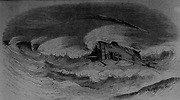 Created by London Illustrated News
Donated by Maureen Anderson
Created by London Illustrated News
Donated by Maureen AndersonDated 1851
An illustration of the Mary Gray of Montrose when she was wrecked on Longscar Rock on 26 September 1851. The Seaton Carew lifeboat was launched but although they attached the boat to the stricken vessel with a grapnel they were obliged to abandon the attempt because of the heavy sea. Carte's Rockets were fired & eventually all four of the crew were brought safely to shore.
More detail » Mystery wooden shipwreck (1)
Mystery wooden shipwreck (1)
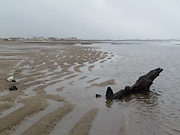 Created by Malcolm Cook
Donated by Malcolm Cook
Created by Malcolm Cook
Donated by Malcolm CookDated 2013
The remains of an unidentified old wooden shipwreck partially exposed on the beach at Seaton Carew in March 2013.
More detail » Mystery wooden shipwreck (2)
Mystery wooden shipwreck (2)
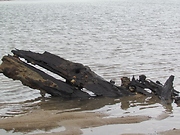 Created by Malcolm Cook
Donated by Malcolm Cook
Created by Malcolm Cook
Donated by Malcolm CookDated 2013
A close-up of the remains of an unidentified old wooden shipwreck partially exposed on the beach at Seaton Carew in March 2013.
More detail » Mystery wooden shipwreck (3)
Mystery wooden shipwreck (3)
 Created by Joanne Shaw
Donated by Joanne Shaw
Created by Joanne Shaw
Donated by Joanne ShawDated 2013
The remains of an unidentified old wooden shipwreck partially exposed on the beach at Seaton Carew in May 2013.
More detail » Painting of a storm at Seaton Sands 1874
Painting of a storm at Seaton Sands 1874
 Created by W.H. Chambers
Donated by Hartlepool Library Service
Created by W.H. Chambers
Donated by Hartlepool Library ServicePainting of a storm by W.H. Chambers at Seaton Sands December 8th and 9th 1874. Beeswing wrecked, Rose, Isabella Miller, Corsair, and Clara Richmond stranded. Crews saved.
This was at the north end of Seaton near where Newburn Bridge is now.
HHT7N 330
More detail » Seaton Carew Designated Historic Wreck (1)
Seaton Carew Designated Historic Wreck (1)
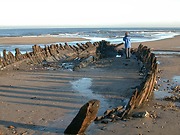 Created by G. Green
Donated by Tees Archaeology
Created by G. Green
Donated by Tees ArchaeologyDated 2002
In December 2002, significant beach loss uncovered large parts of the Seaton Carew Designated Historic Wreck, which is generally almost completely buried in the sand. The importance of this wooden vessel was recognised in 1996 when it received its Historic Wreck designation.
More detail » Seaton Carew Designated Historic Wreck (2)
Seaton Carew Designated Historic Wreck (2)
 Created by G. Green
Donated by Tees Archaeology
Created by G. Green
Donated by Tees ArchaeologyDated 2002
An archaeologist from Tees Archaeology taking detailed measurements of the wreck, which was unexpectedly revealed in December 2002.
More detail » Seaton Carew Wreck looking north (1)
Seaton Carew Wreck looking north (1)
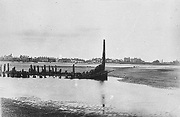 Donated by Maureen Anderson
Donated by Maureen AndersonDated 1889
Photo of the Seaton Carew Wreck from the south in 1888/89 (probably the latter). This is before salvage of the wood & shows a substantial piece of stern post still intact.
More detail » Seaton Carew Wreck looking north (2)
Seaton Carew Wreck looking north (2)
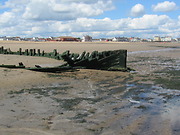 Donated by Maureen Anderson
Donated by Maureen AndersonDated 2013
Seaton Carew wreck from the south in July 2013.
More detail » Seaton Carew wreck looking south (1)
Seaton Carew wreck looking south (1)
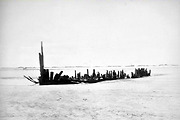 Donated by Maureen Anderson
Donated by Maureen AndersonDated 1889
Seaton Carew wreck looking south in 1888/89.
More detail » Seaton Carew wreck looking south (2)
Seaton Carew wreck looking south (2)
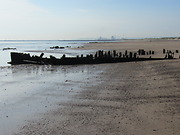 Donated by Maureen Anderson
Donated by Maureen AndersonDated 2013
Seaton Carew wreck from the north in July 2013.
More detail » The 'Anne'
The 'Anne'
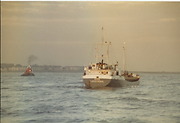 Created by Bill Henderson
Donated by Bill Henderson
Created by Bill Henderson
Donated by Bill HendersonDated 1985
In November 1985, the Dutch coke carrier 'Anne' ran aground near Newburn bridge at Seaton. Before being refloated, this was quite a tourist attraction.
More detail » Time stranded
Time stranded
 Donated by Maureen Anderson
Donated by Maureen AndersonDated 1912
The Time, a new hulk, was being towed to Hartlepool to have engines fitted when the tug's tow-rope broke. She stranded on Seaton beach on 12th July 1912. She was re-floated to continue her journey and was still sailing until at least the end of WW2.
More detail » Unknown shipwreck engine
Unknown shipwreck engine
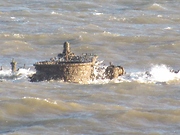 Created by Malcolm Cook
Donated by Malcolm Cook
Created by Malcolm Cook
Donated by Malcolm CookDated 2014
What appears to be the remains of a triple-expansion steam engine was spotted off Seaton in January 2014, on a very low Spring tide. Local records do not indicate any shipwreck in this location, so for the time being the engine - and the ship it came from - remain a mystery.
More detail » Wreck of the Alphonse Marie (1)
Wreck of the Alphonse Marie (1)
 Donated by Maureen Anderson
Donated by Maureen AndersonDated 1881
The French schooner Alphonse Marie was sailing to Middlesbrough when she struck on Longscar rocks on Friday, 26th August 1881. Captain Calmer and the crew of five saved themselves in their own small boat. The schooner washed onto Seaton beach at high tide.
More detail » Wreck of the Alphonse Marie (2)
Wreck of the Alphonse Marie (2)
 Donated by Maureen Anderson
Donated by Maureen AndersonDated 1881
Almost everything from the wreck of the Alphonse Marie would have been salvaged and auctioned off. Note Staincliffe House and Villas and the lowlight in the background.
More detail » Wreck of the Trio
Wreck of the Trio
The Swedish barque Trio was built in 1868 by G Scotte at Procida, Italy as Profirio di Martino. By the time of her demise she was owned by Manfred Nilsson of Calmer. He was also the Master of the vessel when she was wrecked.
Eight glass plate slides (two almost identical) and a description of the end of the Trio's last voyage, written by Sergeant Parkes, a witness to the event, are in the keeping of Hartlepool Museum at Sir William Gray House.
During ENE gales on Wednesday 13 November 1901 the Trio was seen making for Hartlepool. Just offshore from Seaton Carew bridge she became unmanageable. The lifeboat could not be launched because of the heavy seas & although rockets were fired they fell short of their target. Between 3.30 & 4.10 pm, in front of hundreds of people, she broke amidships throwing her cargo of coal into the air. Miraculously three of her crew of ten were pulled from the water alive by local people wading into the boiling surf. In the days that followed dolls & toys that the seamen were taking home for Xmas washed ashore along with the wreckage.
Two of the rescuers were William Grainger & Alfred Gales.
Northern Daily Mail – Thursday 14 November 1901:
THE WRECK OF THE TRIO. LIFEBOATMEN CRITICISED. The wreck at West Hartlepool yesterday turned out to be the most distressing occurrence that the inhabitants of this part of the coast have witnessed for many years. In the presence of thousands of people the Swedish barque Trio went to pieces, and only three of the crew ten were saved. There seems to be strong consensus of opinion among the teeming thousands who saw these men perish that much more might have been attempted than was attempted. Whilst the lifeboats on every other part of the Coast were out during the greater part of the day those responsible for the management of the West Hartlepool lifeboat did not see the necessity of launching her till the Trio had practically gone to pieces. Lifeboats have been launched in the teeth of a gale heavier than that yesterday afternoon, and it would be very interesting to know the precise reasons for the at present unaccountable delay putting the local boat into the water. It was obviously not impossible to row the lifeboat when she was in the water, or why was she launched at all? We cannot for a moment imagine that our local lifeboatmen declined to face the risk. If they had exhibited any cowardice in the matter why were not volunteers called for as in the case of wreck in exactly the same spot some 30 years ago? On that occasion the regular occupants of the boat refused to go out with her, and a crew consisting of men from the ironworks got into the boat and accomplished the work of rescue. If it is objected that the boat cannot be launched with any hope of success in a gale like that of yesterday, then what on earth is the use of having a boat at all? Surely it cannot be maintained merely for ornamental purposes in order to make a fine show at the lifeboat demonstration?
Shields Daily Gazette – Saturday 28 December 1901:
THE CHARGE AGAINST LIFE BOAT MEN. Complaint having been made against the West Hartlepool lifeboatmen that, during the recent storm, they did not proceed to the assistance of the barque Trio, which was wrecked, with the loss of seven lives, in view of enormous crowd, the National Lifeboat Institution has held a private inquiry. It is not anticipated that further action will be taken, as the explanations received are said to satisfactory.
More detail » Wreck of the Trio (1)
Wreck of the Trio (1)
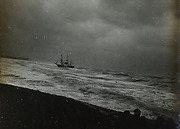 Created by Unknown
Donated by Hartlepool Museum Service
Created by Unknown
Donated by Hartlepool Museum ServicePart of the Hartlepool Museum Service collection
Dated 1901
The Swedish barque Trio approaching Hartlepool
More detail » Wreck of the Trio (2)
Wreck of the Trio (2)
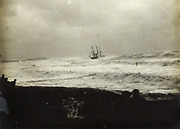 Created by Unknown
Donated by Hartlepool Museum Service
Created by Unknown
Donated by Hartlepool Museum ServicePart of the Hartlepool Museum Service collection
Dated 1901
The Trio loses her rudder.
More detail » Wreck of the Trio (3)
Wreck of the Trio (3)
 Created by Unknown
Donated by Hartlepool Museum Service
Created by Unknown
Donated by Hartlepool Museum ServicePart of the Hartlepool Museum Service collection
Dated 1901
The Trio is swamped and loses a mast.
More detail » Wreck of the Trio (4)
Wreck of the Trio (4)
 Created by Unknown
Donated by Hartlepool Museum Service
Created by Unknown
Donated by Hartlepool Museum ServicePart of the Hartlepool Museum Service collection
Dated 1901
The sea becomes rougher and the waves higher.
More detail » Wreck of the Trio (5)
Wreck of the Trio (5)
 Created by Unknown
Donated by Hartlepool Museum Service
Created by Unknown
Donated by Hartlepool Museum ServicePart of the Hartlepool Museum Service collection
Dated 1901
The Trio loses her second mast.
More detail » Wreck of the Trio (6)
Wreck of the Trio (6)
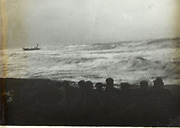 Created by Unknown
Donated by Hartlepool Museum Service
Created by Unknown
Donated by Hartlepool Museum ServicePart of the Hartlepool Museum Service collection
Dated 1901
The Trio loses her third mast.
More detail » Wreck of the Trio (7)
Wreck of the Trio (7)
 Created by Unknown
Donated by Hartlepool Museum Service
Created by Unknown
Donated by Hartlepool Museum ServicePart of the Hartlepool Museum Service collection
Dated 1901
The Trio lifts and breaks amidships.
More detail » Wreck of the Wensleydale - 1852
Wreck of the Wensleydale - 1852
Newcastle Courant Friday 5th November, 1852:
The coal laden brig Wensleydale, of South Shields, struck the Longscar rock, between four and five, and speedily went to pieces. The cabin boy of this vessel had been washed over on Wednesday night, about ten. The nine remaining of the crew are thus accounted for :-The captain and the carpenter were hurled over- board from the main rigging and drowned, shortly after the vessel struck; two more of the crew were discovered in a state of exhaustion; the bodies of three dead from cold and exhaustion were taken off by the Seaton life-boat, with the mate and a seaman, the sole survivors of the wreck, in a state of extreme exhaustion. In these two latter cases the daring conduct of William Hood, the commander of the Seaton life-boat, and his gallant crew of sixteen (which numbered amongst them four of his sons), is described as beyond all praise. It was a deliverance effected at the imminent peril of all their lives. The masts had gone - the vessels were rapidly breaking up, under the irresistible force of a tremendous sea, and the danger to the lifeboat from the large fragments of the vessels was extreme; however the crew persevered, made three attempts and the saving of nine lives was the consequence.
Newcastle Guardian and Tyne Mercury 6th November, 1852:
The coal laden brig the Wensleydale, of and from Shields, to London, with crew of ten men and boys, struck on the Longscar rocks on Thursday afternoon. She soon went to pieces. The Seaton lifeboat, commanded by Mr. William Hood, and manned by 16 fishermen, made a gallant effort to save the crew. After a hard struggle they were able to take two men off alive, the bodies of three others who had died of exhaustion; the master, the carpenter, and cabin boy of the ill-fated vessel had been washed from the rigging and drowned, previous to the life - boat reaching her; two more of the crew also perished.




